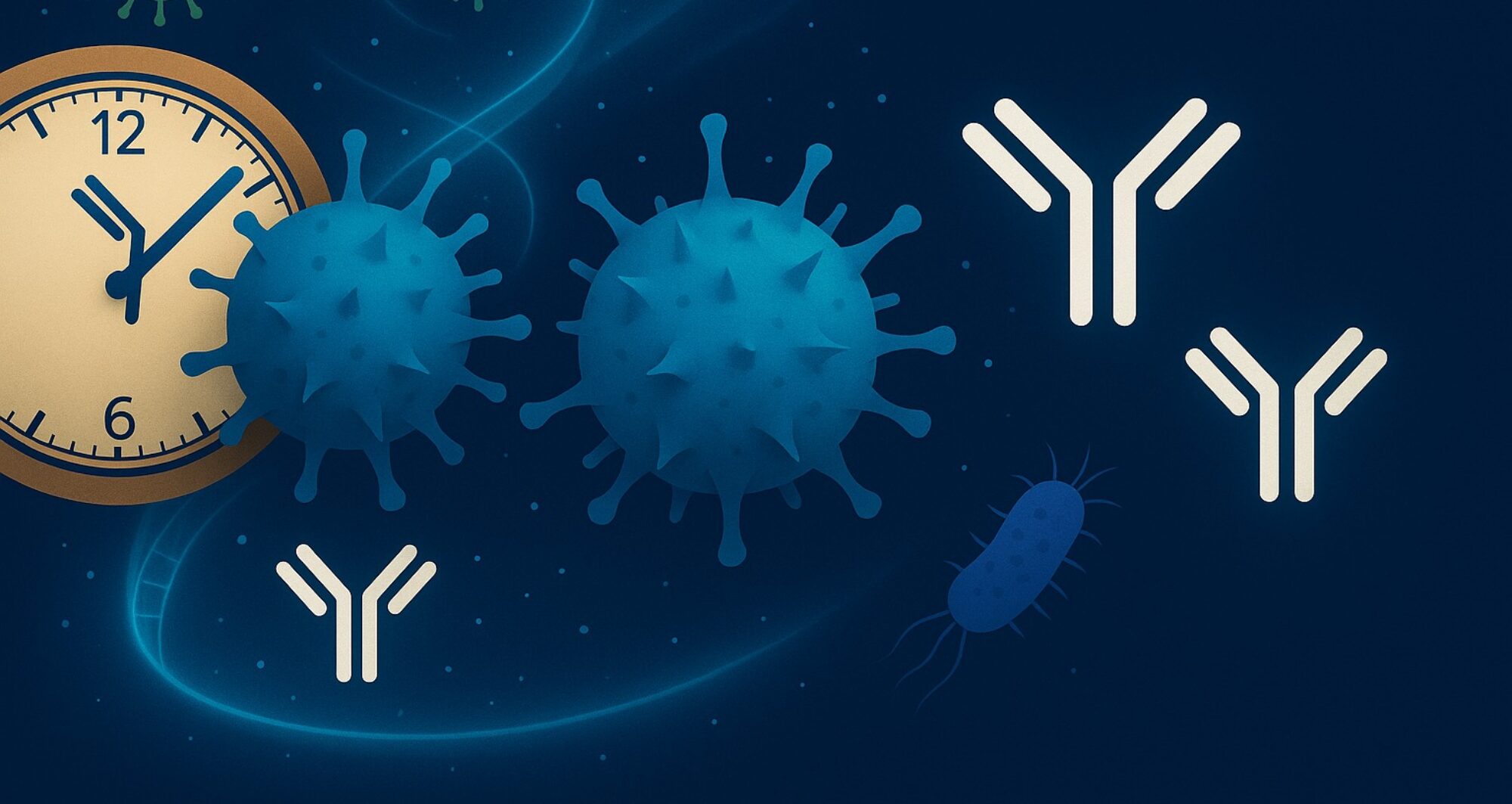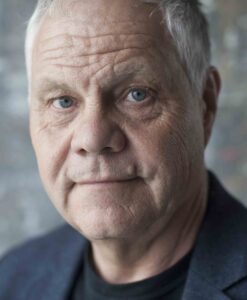Prof. dr. Jean-Michel Claverie
Eijkman lecture
Biography:
Prof. dr. Jean-Michel Claverie received multidisciplinary training in biochemistry, computer science and theoretical physics at the University of Paris and earned his Doctorate in 1977 on mathematical modelling of biological systems. He held research positions at the Jacques Monod Institute (Paris), the Salk Institute (La Jolla), the Pasteur Institute (Paris), the National Center for Biotechnology Information at the NIH (Bethesda), and Incyte Pharmaceuticals (Palo Alto) before returning to France in 1995 to found the Structural and Genomic Information Laboratory at Aix-Marseille University. An emeritus professor of genomics and bioinformatics, Claverie is internationally recognized for discovering and characterizing “giant” viruses, including the first infectious viruses revived from ancient Siberian permafrost, helping launch the field of paleovirology. He has co-authored more than 270 publications, is a co-author of the best-selling Bioinformatics for Dummies, and has received numerous honours, including the CNRS Silver Medal, and the Prix Jaffé of the French Academy of Sciences, shared with his long-time collaborator Dr. Chantal Abergel.
Lecture: 20 years of research on giant viruses.
Some twenty years ago, the discovery of the first giant virus, Acanthamoeba polyphaga mimivirus (the prototype of mimivirus bradfordmassiliense species), paved the way for the discovery of more than 10 new families of protist-infecting DNA viruses with unexpected diversity in virion shape and size, gene content, genome topology and mode of replication. Complementing the isolation and detailed characterizations of individual viruses, large scale metagenomics studies of marine, freshwater, anthropogenic and terrestrial environments have now identified more than 8500 species-level clusters most of which associated to unknown hosts. Following the description of the most characterized families, I will examine how the historical concepts of virology have held up in the light of this new knowledge. Although the initial emphasis was on the gigantism of the newly described viruses infecting amoebae, the subsequent discovery of viruses with intermediate virion and genome sizes gradually re-established a continuum between the smallest and largest viruses within the hyperdiverse phylum Nucleocytoviricota.
Prof. dr. Toomas Kivisild
Biography:
 Prof. dr. Toomas Kivisild earned his MSc in biology at the University of Tartu, where he also completed his PhD in 2000 on the origins of Eurasian populations using mitochondrial DNA. After postdoctoral training at Stanford University, he held positions at the Estonian Biocentre and the University of Tartu, and from 2006 to 2018 was Reader in Archaeogenetics at the University of Cambridge. Since 2018, he has been Professor of Human Genetics and Head of the Laboratory for Human Evolutionary Genetics at KU Leuven. Kivisild is internationally recognized for pioneering studies integrating modern and ancient DNA to reconstruct human evolutionary history, with a focus on global population structure, sex-specific demographic processes, kinship, admixture, and genetic adaptation relevant to human health. He has led major international projects on the population history of South Asia, Siberia, and Europe, received the Estonian National Science Prize, and continues to supervise MSc and PhD students in evolutionary population genetics.
Prof. dr. Toomas Kivisild earned his MSc in biology at the University of Tartu, where he also completed his PhD in 2000 on the origins of Eurasian populations using mitochondrial DNA. After postdoctoral training at Stanford University, he held positions at the Estonian Biocentre and the University of Tartu, and from 2006 to 2018 was Reader in Archaeogenetics at the University of Cambridge. Since 2018, he has been Professor of Human Genetics and Head of the Laboratory for Human Evolutionary Genetics at KU Leuven. Kivisild is internationally recognized for pioneering studies integrating modern and ancient DNA to reconstruct human evolutionary history, with a focus on global population structure, sex-specific demographic processes, kinship, admixture, and genetic adaptation relevant to human health. He has led major international projects on the population history of South Asia, Siberia, and Europe, received the Estonian National Science Prize, and continues to supervise MSc and PhD students in evolutionary population genetics.
Lecture: The impact of plague pandemics on the genetic make up of Northern Europe.
Genetic differences between human populations in Europe are relatively minor, yet important enough to appear as significant confounders for complex trait analyses. Studies of ancient genomes are only just starting to illuminate to what extent demographic events in the last two millennia, including mass migrations and pandemics, contributed to the formation of present-day population structure in Europe. Here we assess comparatively the impact of plague pandemics and migration on population structure formation in North Europe with aDNA evidence from the UK, Norway, and Belgium, considering critically the limitations and caveats for inference of selection.
Prof. dr. Chun-Xia Yi
Biography:
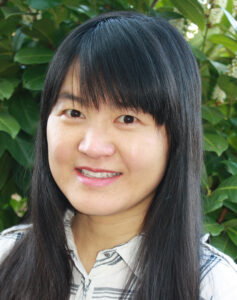 Prof. dr. Chun-Xia Yi is an associate professor of endocrinology and metabolism at Amsterdam UMC, where she leads a research group focused on neuroimmune regulation of metabolism. She earned her PhD in neurobiology and neurosciences at the Netherlands Institute for Neuroscience (NIN), and investigates how hypothalamic neurons and microglia interact to control energy balance, food intake, and body weight, combining animal models with human tissue and clinical imaging studies. Her research explores how microglial immune activity and cellular metabolism drive obesity, type 2 diabetes, and weight-loss rebound. In 2024 she was awarded a prestigious NWO VICI grant for her project “Unravelling microglial obesogenic memory underlying body-weight rebound to combat obesity.” Yi has published widely on the mechanisms linking brain inflammation and metabolic disease and continues to seek novel therapeutic strategies by reprogramming microglial function.
Prof. dr. Chun-Xia Yi is an associate professor of endocrinology and metabolism at Amsterdam UMC, where she leads a research group focused on neuroimmune regulation of metabolism. She earned her PhD in neurobiology and neurosciences at the Netherlands Institute for Neuroscience (NIN), and investigates how hypothalamic neurons and microglia interact to control energy balance, food intake, and body weight, combining animal models with human tissue and clinical imaging studies. Her research explores how microglial immune activity and cellular metabolism drive obesity, type 2 diabetes, and weight-loss rebound. In 2024 she was awarded a prestigious NWO VICI grant for her project “Unravelling microglial obesogenic memory underlying body-weight rebound to combat obesity.” Yi has published widely on the mechanisms linking brain inflammation and metabolic disease and continues to seek novel therapeutic strategies by reprogramming microglial function.
Lecture: Microglial immunometabolism and phagocytosis in obesity.
Microglia, the brain’s resident immune cells and professional phagocytes, play a pivotal role in maintaining neural homeostasis. Mirroring peripheral macrophages, microglia continuously monitor the brain’s microenvironment, clearing pathogens, debris, and harmful molecules to preserve neuronal health. Their phagocytic function is intricately linked to intracellular immune and metabolic signaling – collectively known as immunometabolism – and relies heavily on cytoskeletal integrity. Disruptions in lipid sensing, leptin signaling, or cytoskeletal organization impair microglial phagocytosis and immune responses, which can compromise neuronal function and contribute to obesity development. This microglial dysfunction is also evident in genetic forms of obesity, such as Prader-Willi syndrome (PWS). Individuals with larger deletions affecting cytoskeletal regulatory genes in the PWS region display malformed microglial phagolysosomes, correlating with more severe obesity. Lifestyle interventions like time-restricted eating (TRE) offer a non-pharmacological strategy to reduce obesity. While TRE effectively lowers body weight and reverses obesity-associated microgliosis in the hypothalamus, it does not fully restore microglial metabolic programming. This suggests that obesity induces a lasting metabolic memory within microglia- one that persists despite weight loss. These findings raise critical questions about the reversibility of neuroimmune dysfunction in metabolic disease and highlight the need for future research focused on erasing this metabolic memory to prevent weight regain after intervention in people with obesity.
Dr. Miranda de Graaf
GSLS lecture
Biography:
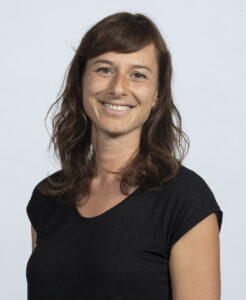 Dr. Miranda de Graaf is a postdoctoral researcher in the Norovirus Research Group within the Viroscience Department at Erasmus Medical Center in Rotterdam. Her work focuses on the evolution and epidemiology of noroviruses, combining molecular virology, phylogeny, and glycobiology to understand how these viruses adapt and spread. She plays a leading role in Noronet, an international surveillance network coordinated with the RIVM that tracks global norovirus outbreaks. Miranda earned her PhD from Erasmus University Rotterdam in 2009, studying host range determinants of human metapneumovirus under Prof. Dr. R.A.M. Fouchier and Prof. Dr. A.D.M.E. Osterhaus. As a Marie Curie Fellow at the University of Cambridge (2009–2012), she investigated the role of glycans in influenza virus evolution in collaboration with LUMC. Her research continues to bridge disciplines and institutions, with the goal of translating molecular insights into improved outbreak response and treatment strategies.
Dr. Miranda de Graaf is a postdoctoral researcher in the Norovirus Research Group within the Viroscience Department at Erasmus Medical Center in Rotterdam. Her work focuses on the evolution and epidemiology of noroviruses, combining molecular virology, phylogeny, and glycobiology to understand how these viruses adapt and spread. She plays a leading role in Noronet, an international surveillance network coordinated with the RIVM that tracks global norovirus outbreaks. Miranda earned her PhD from Erasmus University Rotterdam in 2009, studying host range determinants of human metapneumovirus under Prof. Dr. R.A.M. Fouchier and Prof. Dr. A.D.M.E. Osterhaus. As a Marie Curie Fellow at the University of Cambridge (2009–2012), she investigated the role of glycans in influenza virus evolution in collaboration with LUMC. Her research continues to bridge disciplines and institutions, with the goal of translating molecular insights into improved outbreak response and treatment strategies.
Lecture: Understanding Norovirus diversity: from host susceptibility to viral evolution.
Norovirus is a leading cause of acute gastroenteritis worldwide, causing an estimated 685 million infections each year. Many norovirus genotypes co-circulate globally, although only a few are responsible for most infections. This genetic diversity contributes to differences in how viruses interact with the human host. A key factor in these interactions is the binding between viral capsid proteins and histo-blood group antigens (HBGAs), which act as attachment factors on host cells. Because HBGAs also determine an individual’s blood type, variation in HBGA expression influences susceptibility to infection. Conversely, different norovirus genotypes recognize distinct HBGA types, making susceptibility both host- and virus-dependent. Noroviruses also display considerable genetic flexibility, periodically giving rise to new genotypes and variants that can escape pre-existing immunity.
In this lecture, we will explore approaches to surveilling norovirus diversity and examine how the interplay between viral evolution, host diversity, immunity, and glycan recognition shapes the virus’s ability to cause recurrent global outbreaks.
Prof. dr. Debbie van Baarle
Biography:
 Prof. dr. Debbie van Baarle obtained her degree in Biomedical Sciences from Leiden University and her PhD in Immunology from the University of Amsterdam. She worked at Sanquin Research, the University Medical Center Utrecht and the RIVM before becoming Professor of Immunology of Vaccinations at the University Medical Center Groningen. Since September 2025, she also serves as Scientific Director of Lifelines, one of the largest population-based cohort studies in the Netherlands and she will join the board of the NVVI as of January 2026. Her research focuses on T-cell mediated immunity and the immune mechanisms underlying protection against viral infections and vaccine responsiveness, with particular attention to ageing, prior infections, and the microbiome. She received the Beijerinck Prize of the Royal Netherlands Academy of Arts and Sciences and a High Potential Award from Utrecht University for her contributions to viral immunology and vaccinology.
Prof. dr. Debbie van Baarle obtained her degree in Biomedical Sciences from Leiden University and her PhD in Immunology from the University of Amsterdam. She worked at Sanquin Research, the University Medical Center Utrecht and the RIVM before becoming Professor of Immunology of Vaccinations at the University Medical Center Groningen. Since September 2025, she also serves as Scientific Director of Lifelines, one of the largest population-based cohort studies in the Netherlands and she will join the board of the NVVI as of January 2026. Her research focuses on T-cell mediated immunity and the immune mechanisms underlying protection against viral infections and vaccine responsiveness, with particular attention to ageing, prior infections, and the microbiome. She received the Beijerinck Prize of the Royal Netherlands Academy of Arts and Sciences and a High Potential Award from Utrecht University for her contributions to viral immunology and vaccinology.
Lecture: Biomarkers of vaccine responses to improve vaccination strategies for vulnerable people.
The immune system is a high-dimensional adaptive network in which overall function emerges from the interplay of diverse cell populations, molecular programs, and regulatory loops. Ageing perturbs this network leading to shifts in immune cell composition, altered activation thresholds, changes in signalling responsiveness, and subtle increases in baseline inflammation which leads to new, often less effective, steady states. The presentation will be focused on how the collective patterns of variability, shape immune function in older adults and more specifically how we can use this variation to predict vaccine responsiveness. These insights could guide personalized vaccination strategies to improve protection against infectious diseases in older and vulnerable groups.
Prof. dr. Marc Bonten
Biography:
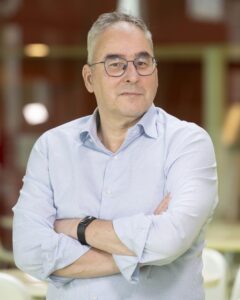 Prof. dr. Marc Bonten earned his MD (1991) and PhD (1994) at Maastricht University Medical School, where his doctoral research focused on colonization of the upper intestinal tract in ventilator-associated pneumonia. He completed specialist training in internal medicine (2000), infectious diseases (2002), clinical microbiology (2008), and epidemiology (2025) at the University Medical Center Utrecht, where he has been professor of molecular epidemiology of infectious diseases since 2003. Bonten is internationally recognized for large-scale epidemiologic studies and investigator-initiated randomized trials on antibiotic resistance and infection prevention, including work on VRE, MRSA, multidrug-resistant Enterobacteriaceae, and the prevention and treatment of ventilator- and community-acquired pneumonia, including COVID-19. He is the Vice-Dean of Education and Director of the Education Center at UMC Utrecht, CEO of the ECRAID Foundation, and coordinator of multiple EU H2020 projects (ECRAID-Base and ECRAID-Prime). He is a member of the Royal Netherlands Academy of Arts and Sciences and the Dutch Outbreak Management Team and received the 2015 ESCMID Excellence Award for his outstanding contributions to clinical microbiology and infectious diseases.
Prof. dr. Marc Bonten earned his MD (1991) and PhD (1994) at Maastricht University Medical School, where his doctoral research focused on colonization of the upper intestinal tract in ventilator-associated pneumonia. He completed specialist training in internal medicine (2000), infectious diseases (2002), clinical microbiology (2008), and epidemiology (2025) at the University Medical Center Utrecht, where he has been professor of molecular epidemiology of infectious diseases since 2003. Bonten is internationally recognized for large-scale epidemiologic studies and investigator-initiated randomized trials on antibiotic resistance and infection prevention, including work on VRE, MRSA, multidrug-resistant Enterobacteriaceae, and the prevention and treatment of ventilator- and community-acquired pneumonia, including COVID-19. He is the Vice-Dean of Education and Director of the Education Center at UMC Utrecht, CEO of the ECRAID Foundation, and coordinator of multiple EU H2020 projects (ECRAID-Base and ECRAID-Prime). He is a member of the Royal Netherlands Academy of Arts and Sciences and the Dutch Outbreak Management Team and received the 2015 ESCMID Excellence Award for his outstanding contributions to clinical microbiology and infectious diseases.
Lecture: How to determine the best treatment for patients.
Translating microbiological and epidemiological insights into effective clinical strategies is essential for improving infection prevention and treatment. In this lecture, Prof. Marc Bonten will discuss the translational journey from basic science to bedside care, drawing on his extensive experience in antibiotic resistance research and large-scale clinical trials. He will highlight how mechanistic understanding of pathogens and resistance dynamics can guide pragmatic interventions in hospital and community settings. By examining successes and obstacles in bridging research and practice, the lecture will underscore the value of integrating laboratory findings, clinical data, and public health perspectives to optimize patient treatment.
Dr. ir. ing. Wieger Wamelink
Biography:
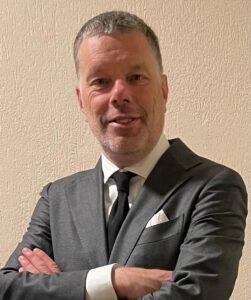 Dr. ir. ing. Wieger Wamelink is an ecologist at Wageningen University & Research (WUR), where he studies the effects of nitrogen deposition and climate change on biodiversity. Trained as an environmental scientist and ecologist at Wageningen University, he combines his expertise in ecology with a passion for space research. In 2013 he founded the Food for Mars and Moon project to explore crop cultivation on Martian and lunar soil simulants provided by NASA. As CEO and co-founder of B.A.S.E. (Bioregenerative Astrofood & Sustenance Engineering), he develops sustainable closed agricultural ecosystems for future space missions and extreme environments on Earth. His pioneering work on space farming earned the Het Klokhuis Science Award in 2016 and the BAD Award in 2023. In addition to his research, he is the author of Stikstofweb (The Nitrogen Web), a book on nitrogen pollution, biodiversity, and climate change.
Dr. ir. ing. Wieger Wamelink is an ecologist at Wageningen University & Research (WUR), where he studies the effects of nitrogen deposition and climate change on biodiversity. Trained as an environmental scientist and ecologist at Wageningen University, he combines his expertise in ecology with a passion for space research. In 2013 he founded the Food for Mars and Moon project to explore crop cultivation on Martian and lunar soil simulants provided by NASA. As CEO and co-founder of B.A.S.E. (Bioregenerative Astrofood & Sustenance Engineering), he develops sustainable closed agricultural ecosystems for future space missions and extreme environments on Earth. His pioneering work on space farming earned the Het Klokhuis Science Award in 2016 and the BAD Award in 2023. In addition to his research, he is the author of Stikstofweb (The Nitrogen Web), a book on nitrogen pollution, biodiversity, and climate change.
Lecture: Imagine living on Mars.
No breathable air, no rain, and soil laced with heavy metals. Yet to stay healthy, astronauts will need more than packaged meals—they’ll need fresh, living food. Growing crops in Martian and lunar regolith is not only a technical challenge but a biological and psychological necessity. The Food for Mars and Moon project (part of B.A.S.E., Bioregenerative Astrofood & Sustenance Engineering) explores how plants can grow safely in these toxic soils, how we can reduce the uptake of harmful elements, and how adding organic matter and microbes can turn lifeless dust into fertile ground. Fresh vegetables in space are more than nutrition; they are medicine for both body and mind—helping to counteract the effects of cosmic radiation, providing antioxidants, and offering the simple joy of caring for living things in isolation. What we learn for space can make farming on Earth more sustainable and circular, too. At the end of this journey through Martian greenhouses and lunar gardens, one question remains: if we really want to thrive beyond Earth, should we also bring… chickens?
